I wrote this article in Japanese and translated it into English using ChatGPT. I also used ChatGPT to create the English article title. I did my best to correct any translation mistakes, but please let me know if you find any errors. By the way, I did not use ChatGPT when writing the Japanese article. The entire article was written from scratch by me, Saikawa Goto.
Introduction
Movies and books covered in this article

Three takeaways from this article
- Feynman, who is as famous as Einstein and Hawking, is well-known not only for his scientific achievements but also for his non-scientific episodes.
- How have his personality traits such as “liking new and dangerous areas” and “lack of interest in other people’s research” contributed greatly to science?
- His self-evaluation was too low due to his genius that was too far ahead of its time.
Self-introduction article


Published Kindle books(Free on Kindle Unlimited)
“The genius Einstein: An easy-to-understand book about interesting science advances that is not too simple based on his life and discoveries: Theory of Relativity, Cosmology and Quantum Theory”
“Why is “lack of imagination” called “communication skills”?: Japanese-specific”negative” communication”
The quotes in the article were translated using ChatGPT from Japanese books, and are not direct quotes from the foreign language original books, even if they exist.
This Book, Which Summarizes Feynman’s Achievements, is a Very Rare Work
If you were asked to name a famous scientist, even if you are not interested in science, you might think of Einstein or physicist in a wheelchair Hawking. And a scientist who is probably second to them in terms of public recognition is Feynman, the star of this book (I don’t know how he is known in the West, but I think he is known as such in Japan).


The most well-known fact about Feynman is probably his investigation of the Space Shuttle Challenger explosion. When he was asked to investigate the explosion, he found that there was a problem with a small part called an O-ring.
His autobiography, “Surely You’re Joking, Mr. Feynman!”, became a worldwide bestseller and his image as a cheerful, mischievous, and loving husband is widely known. He was a person with many interesting stories that were unlikely for an ordinary scientist, such as cracking a safe while developing a nuclear reactor in Los Alamos, practicing and performing with a percussion instrument called a bongo in Brazil, and conducting research in the corner of a gentleman’s club. Because of this, books tend to focus on these fascinating stories.


Until I read this book, I never had a comprehensive understanding of what kind of accomplishments the scientist Feynman had achieved.
While I knew some fragmented information, such as winning the Nobel Prize for the “Renormalization theory” and creating the “Feynman diagram” named after himself, I don’t think there are many books for the general public that can help them understand the big picture of these achievements.

The translator of this book wrote as follows:
I aimed to show the achievements of the genius scientist Feynman, the impact they had on 20th century physics, and how they can be a stimulus in solving the mysteries of the 21st century, in an easily understandable way for general readers, by depicting his personality through his scientific accomplishments. This book is probably the first attempt to explain Feynman’s physics in such detail for general readers as a popular science book.
It’s strange that the “achievements” of such a well-known and multifaceted scientist are not well known.

There are not many books that summarize Feynman’s achievements, but “The Feynman Lectures on Physics,” which compiles his lectures at Caltech (California Institute of Technology), is a well-known and essential book for anyone aspiring to become a physicist.
There is an interesting story about Feynman.
He was asked to give lectures for undergraduate students at Caltech, even though he had no previous teaching experience. His lectures became very popular and even graduate students and professors came to listen to them.

Feynman’s lectures were honestly a bit advanced for undergraduate students, but they were extremely interesting and gained a reputation that even other professors came to listen to. His ability to explain the complex world of physics in an easy-to-understand way was overwhelming and very rare among top scientists. And the book that summarized his lectures is also considered a masterpiece.

So, this book is a rare work that focuses on Feynman’s “achievements,” which are generally only depicted “interesting episodes.”

Feynman made significant contributions in the field of “quantum mechanics,” which is known to be a very complex field that I, honestly, do not understand it at all. Even Feynman himself left behind a famous quote saying,
Anyone who says they understand quantum theory is a liar.

What I’ve come to understand by reading this book is that “Feynman was way ahead of his time.” Even from today’s perspective, Feynman’s achievements are said to offer extremely innovative perspectives and ideas that go beyond normal conventions. In other words, he was so far ahead that even scientists of his time would have had a hard time understanding him.
That’s why “explaining Feynman’s achievements” is beyond my abilities, but I’ll do my best to summarize what I’ve been able to understand.
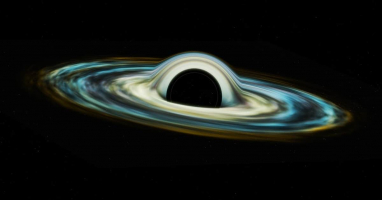
What Contributions did the Pioneering Genius Feynman Make to Science?
During His Student Days, Feynman had Given a Presentation in front of Einstein
It goes without saying, but Feynman was exceptional even during his student years and was considered a genius.

Here is the story: He was admitted to MIT (Massachusetts Institute of Technology), and for some reason Harvard University gave him a scholarship even though he had not applied for it. The reason was because he had won a certain math contest. Despite being a physics major, he was asked to join the math team and they won by a significant margin.
However, Feynman ended up not going to Harvard University and instead went to Princeton University. The author speculates that the reason was because Einstein was there. Princeton University was the place where Einstein had settled down for his final years.
But at Princeton University, Feynman ended up getting involved with someone he never expected to. That was Wheeler, a scientist who was famous for being one of the creators of the Big Bang theory and having a rich imagination. Feynman and Wheeler hit it off very well.

When Feynman entered Princeton University, there was a problem in the world of physics called “self-energy” (although I don’t understand this problem, so I won’t explain it). Feynman was thinking about this problem and came up with an unconventional solution, which he discussed with Wheeler.

Then, Wheeler immediately pointed out the flaws in Feynman’s idea and presented an even more outrageous idea: “Particles act backwards in time” (which I also can’t understand anymore). Feynman developed this idea on his own and came up with his own thoughts.
The exchange with Wheeler was very meaningful for Feynman.

And despite being just a graduate student, Feynman ended up having to present his ideas in front of star physicists of the time like Einstein, Neumann, and Pauli. It’s an episode that shows just how much of a genius Feynman was and how much he was expected of.
Now, the idea that Wheeler and Feynman came up with turned out to be wrong. Regarding this point, this book contains a passage that makes us rethink what “science” is all about:
If that’s the case, what was the point of all the diligent research they did? Here’s the thing – in science, almost all important new ideas are wrong.

In the history of science, there are many stories of ideas that were so new and radical that they were not accepted when they were first presented. However, there are a certain number of novel and incomprehensible but actually correct ideas, and these outlandish ideas often lead to breakthroughs and advancements in science.
Feynman was exactly the kind of person who was interested in these radical ideas. The book says that he “liked to push into new and dangerous territory.”

And one of the reasons why he did not leave “achievements that are easy to understand and evaluate” can be attributed to this stance.
Feynman was a Scientist Who did Not Leave “Significant Achievements”
Feynman had another distinctive trait, which was that he “did not show interest in the achievements of others.” Regarding the basis for thinking so, the author writes as follows.

He did not trust any idea unless he derived it from first principles using his own methods.

I think scientists typically understand previous research and stand at the starting line of “this is already known,” and after that proceed with their research thinking about what they can add to it. However, Feynman did not try to learn about other people’s research at all. This may be because he was a genius who could derive everything himself from first principles.

And because of these personality traits of wanting to “explore new and dangerous areas” and having no interest in other people’s achievements, the author points out that there remained no clear “this is what Feynman has accomplished.”
For example, this book explains Feynman’s contributions to “superconductivity.” He understood the problem of superconductivity and thought about “what guidelines to follow.” Ultimately, the guidelines he established had the following impact on how physicists in this field approach their topics:
He has changed the way physicists challenging in this field how they think about their subject.

However, Feynman ultimately only set a direction and did not solve the mystery of “superconductivity”. The author points out the reason for this as follows:
He didn’t bother to examine the previous research in this field.
In other words, if Feynman had investigated the previous research and understood the current state of research on “superconductivity”, he would have undoubtedly solved the mystery himself. However, he was the type who wanted to think for himself from first principles, had no interest in researching other people’s achievements, and was always drawn to new and dangerous areas. As a result, he never seriously faced the mystery of “superconductivity”.

If Feynman had listened more to others, tried to learn from those around him, and didn’t obsess about discovering everything on his own, he might have achieved even more. However, achievement was not his purpose. His purpose was to learn about the world. He believed that the joy was in discovering something, even if it was something that people all over the world besides him already knew.
The point “even if it was something that people all over the world besides him already knew” is important to understanding Feynman’s research. What was important to Feynman was not “discovering new truths that no one had found,” but “finding something that he found enjoyable, even if it had already been researched thoroughly, and thinking about it in his own way.”
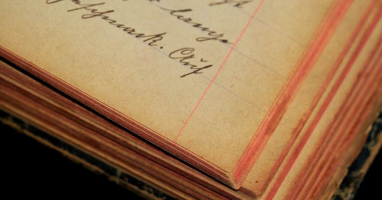
In essence, this would be like saying, “When I decide to build a house on my own, I feel uncomfortable unless I think up and execute everything from scratch myself, from how to cut wood to how to wire electricity, install plumbing fixtures, and reinforce the house against earthquakes, without reading books, without researching on the Internet, and without asking help from experts.”

If Feynman had given up that kind of approach and taken the stance of “solving undiscovered and unsolved mysteries,” many more difficult problems might have been solved. From the perspective of an ordinary person like me, it feels like a great disappointment.
In addition, the book introduces such an episode as this.

While pondering on liquid helium, Feynman had an idea and uncharacteristically wrote a paper on it. He usually found it tiresome to write papers to explain things to others and rarely did it voluntarily.
However, he later found out that two young physicists had just published papers on the same topic. If he were to publish his paper at that time, all the attention would be focused on his paper as he was already a well-known figure.
Therefore, he ultimately chose not to publish his paper. The phenomenon he had noticed was later named “Kosterlitz-Thouless transition” after the two physicists who had published their papers.

Even just looking at this one episode, you can tell he was extraordinary scientist.
He Understood “Quantum Mechanics” in a Completely New Way
Now, I’ve gone on a bit of a tangent, so let’s get back to the story. The idea of Wheeler and Feynman was wrong.
Afterward, the two of them compiled research on classical electromagnetism, and furthermore, they studied whether it was possible to incorporate quantum mechanics.

Now, let’s try to understand the situation at the time. In the world of quantum mechanics, the “Schrödinger equation” was already known, and Dirac had even created the “Dirac equation” which incorporated Special relativity into quantum mechanics. Understanding these previous studies made it easier to for many scientists conduct research on “incorporating quantum mechanics into classical electromagnetism”.
However, as mentioned earlier, Feynman couldn’t be satisfied with just following the existing methods. So, he searched for a completely new idea of understanding quantum mechanics, using “Lagrange’s principle of least action” that he learned in high school as the axis of his exploration.

Upon discussing his ideas with European physicist Yela at a certain party, Feynman was suggested to look into a paper published by the genius, Dirac, which might contain some hints. Feynman immediately rushed to the library to read Dirac’s paper and made calculations at a surprising speed that amazed Yela, leading him to understand the correctness of his own thoughts.
Dirac, who is also known as a genius who cannot be left out when talking about quantum mechanics, was known to be a scientist who was difficult to get along with and quite an oddball among scientists. In this book, the words of a scientist named Eugene Wigner are introduced, describing Dirac as such.

Feynman is the second Dirac. The only difference is that this time Dirac is a human.
It means that Feynman is very human, unlike Dirac, who had the same level of intelligence but was inhuman. Feynman’s sociability is also unique for a scientist, but it also shows how difficult Dirac was perceived as a person.
He Went to the University Where Bethe was, With the War in Between
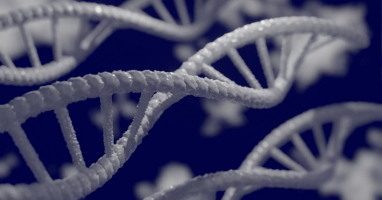
Feynman, who understood the correctness of his research in Dirac’s paper, was caught in the war before he could finish writing up the paper. Like other physicists of the time, Feynman was also called to Los Alamos and involved in the research of the atomic bomb.


At Los Alamos, Feynman’s genius was once again on full display. Despite the presence of many experienced senior physicists, Feynman was chosen to lead the theoretical group. One scientist, impressed by Feynman’s lightning-fast calculations, is said to have remarked,
It’s better to lose two other physicists, anyone will do, than lose Feynman.
Most books about Feynman would focu heavily on his wartime experiences, including various anecdotes from his time at Los Alamos and his exchanges with his soulmate Arline during her hospitalization. However, this book primarily focuses on his scientific achievements, so the wartime section is relatively brief.

In this book, the important event that happened in Los Alamos was meeting Bethe. In fact, Bethe was the one who nominated Feynman as the leader and made the statement “than lose Feynman.” Bethe is also a very famous physicist known for his achievements such as solving the difficult problem of how the sun can shine.
Bethe was the type who needed someone to talk to when he was gathering his thoughts. When Feynman happened to be the only person in Los Alamos who was available and Bethe talked to him, the two realized that they had very good chemistry with each other.

After the war, Feynman whose genius was widely recognized got some offer from various universities and research institutions. However, Feynman ultimately chose Cornell University, where he had met Bethe at Los Alamos.
This decision, like his previous one to choose Princeton University, would lead to an unexpected encounter that would play a crucial role in Feynman’s life. This encounter was with Dyson, who was also recognized as a genius and had originally been at the University of Cambridge. A recognized genius, he was originally at the University of Cambridge. And when Dyson asked several physicists where he should go to keep up with the exciting latest developments in science, they all answered that he should join Bethe’s group at Cornell University.
This is how Feynman came to meet Dyson, who was working in Bethe’s group at the time.
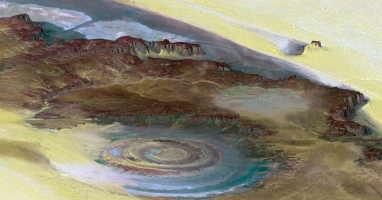
The Impact of “Renormalization Theory” and “Feynman Diagram”
Now, what Feynman was thinking at the time was this:
The original problem was to “incorporate quantum mechanics into classical electromagnetism,” and this resulted in the theory known as “Quantum electrodynamics (QED).” Now, Feynman was thinking about incorporating Special relativity into this QED.

As previously mentioned, Dirac had come up with an equation that incorporated quantum mechanics and Special relativity. Therefore, it should also be possible to incorporate Special relativity into QED. After extensive research, Feynman finally figured out how to do it and was awarded the Nobel Prize for this achievement.
Now, the method called “Renormalization” that Feynman came up with was actually independently derived by two other physicists, Schwinger and Tomonaga Shinichiro. Especially, Tomonaga’s contribution was highly acclaimed because Japan was isolated from the rest of the world in scientific research due to the recent end of the war. Furthermore, while the content was the same, Tomonaga’s method was more concise than Schwinger’s. Dyson highly praised Tomonaga Shinichiro’s approach by saying as follow.
Tomonaga expressed his method in a clear and concise way that anyone can understand, while Schwinger did not.

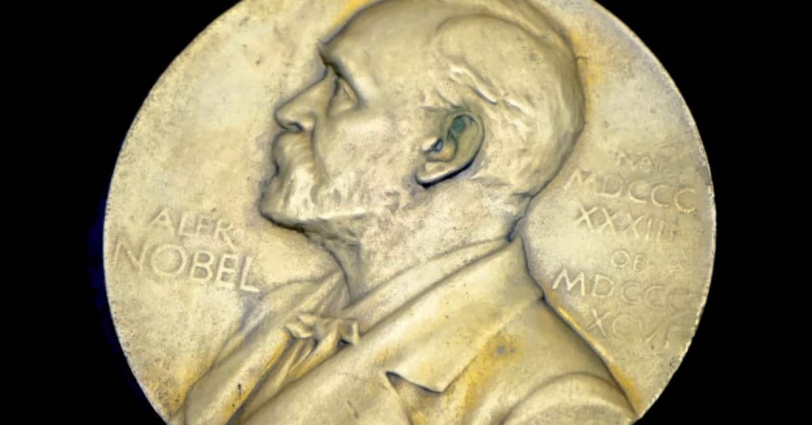
For this reason, three people, including Feynman, received the Nobel Prize at the same time.
Now, if Feynman had only come up with the “Renormalization theory,” his fame might not have been so high. However, Feynman came up with a famous diagram called the “Feynman diagram,” which helps to understand quantum mechanics through graphics.

It seems that this amazed the scientists of the time.
Physicists trusted Schwinger, but his method was too complicated and discouraging. Feynman’s approach was equally reliable, consistent, far simpler and a completely systematic method for calculating higher-order corrections to quantum mechanics.
In the commentary of this book, Takeuchi Kaoru writes about the effect brought by “Feynman diagram” as follows:
Feynman diagram is a method of using “graphics” to perform calculations in quantum electrodynamics, which allows calculations to be done hundreds of times faster and more efficiently. A common metaphor is that the time required for the extremely difficult “Klein-Nishina’s formula” calculation has been reduced from one year to one day (sorry, one year or one day is variable, depending on the individual).
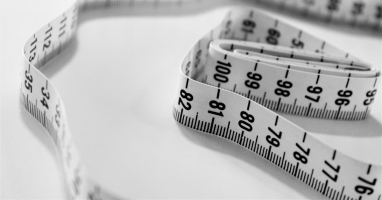
Despite the fact that it is noted that there are individual differences, if one year could be shortened to one day, it would be an incredible achievement. That is how much “Feynman diagram” revolutionized the way quantum mechanics is understood and calculated.
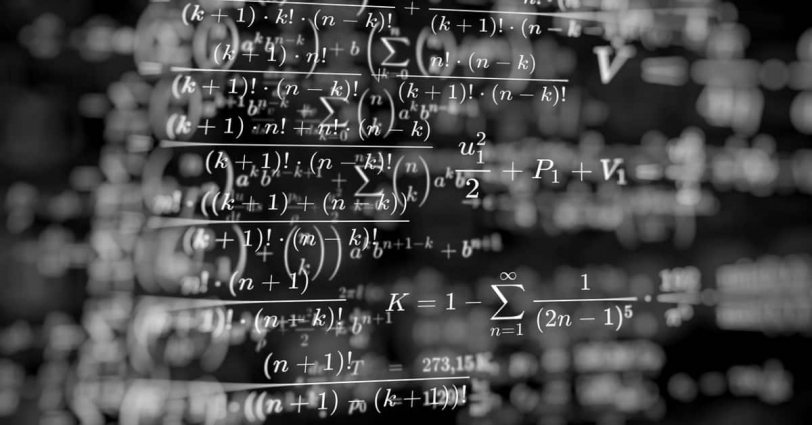
In addition, this “Feynman diagram” contains an idea that can be called Feynman’s (or Wheeler’s) “revenge” in a sense. The idea of “Particles act backwards in time”, which was ultimately found to be wrong, is used in “Feynman diagram”. It elegantly resurrects an idea that was found to be incorrect in another field.

Dyson’s Role
The “Feynman diagram” revolutionized the way we understand quantum mechanics, but it wasn’t immediately understood.
In fact, when it was first presented, it wasn’t understood at all.
Feynman was an intuitive thinker who, as mentioned earlier, disliked writing papers. He himself knew the usefulness of the “Feynman diagram” he had created, but even when he explained it to the quantum mechanics heavyweights, they didn’t understand it at all.

So Feynman, feeling like he had no choice, decided to write a paper on his idea, even though he didn’t like writing papers. However, he struggled to find the right words to explain his visual idea of using diagrams.
Dyson, who heard about Feynman’s situation, published a paper demonstrating that the techniques used by Schwinger, Tomonaga Shinichiro, and Feynman were all mathematically the same, before Feynman had a chance to explain his “Feynman diagram” idea. Thanks to this paper, the “Feynman diagram” quickly became widely used in the world of physics.

Of course, even without Dyson’s paper, “Feynman diagram” would have eventually become widespread, but it would have taken much more time.
Feynman’s Contribution to Science
Now, Feynman understood the usefulness of “Feynman diagram”, but he himself did not hold his idea in high regard.

That’s because Feynman believed that he had only found a convenient method, not a fundamental discovery.
Even when he won the Nobel Prize in 1965, and throughout the long years leading up to that moment, Feynman felt that his method was merely convenient and lacked depth. He didn’t think that he had exposed any fundamental properties of nature, such as sweeping away infinity from Quantum electrodynamics, and only found a way to ignore those infinities without causing other problems. He felt that his true hope – the hope that path integral would renew our understanding of the basis of nature and cure the ills of relativistic quantum mechanics – had not come true.
However, Feynman’s self-evaluation was wrong. Even if it is regrettable that I cannot fully explain it because I could not understand it well even after reading this book, it seems that “Feynman diagram” is now evaluated as a great discovery that “grasps the essential part of quantum mechanics”, not just a “convenient way”.

Other, with his amazing intuition, Feynman predicted facts about the universe that were not yet known during his lifetime.

Surprisingly, at the time of Feynman’s research, almost everything that scientists know today about the greatest measure of the universe was not yet known. Nevertheless, his intuitions about many important areas were all correct, with one exception. And it is hoped that experiments at the cutting edge of observational cosmology will soon provide the first evidence that his picture of the graviton as the fundamental quantum of the gravitational field is correct.

In this text, the phrase “one exception” refers to “gravitational waves.” And after the publication of this book, gravitational waves were successfully observed, and it became clear that Feynman’s predictions about the universe were all correct.
Feynman, who loved exploring “new and dangerous territories,” ultimately delved into various fields as if sampling them. He came up with innovative ideas and calculation methods that specialized researchers could not have reached, and contributed greatly to science on many levels that could not be evaluated as “Feynman’s achievements.”
He created highly original mathematical methods that could be used in these fields and provided new insights into physics. Other important developments, leading to numerous major discoveries and essentially advancing almost all areas of modern theoretical and experimental physics, were greatly contributed by his work. This ranges from his research on condensed-matter physics to our shared understanding of weak and strong interactions, and to current research on quantum gravity and quantum computers. However, he himself never made any discoveries or won any awards. In this sense, he advanced physics more than almost any other scientist of his time, opened up new research areas, provided key insights, and generated interest where there was previously none, but tended to take command from the rear or at best from the side.

As a result, even if Feynman did not have notable achievements such as “Renormalization theory” and “Feynman diagram”, his contribution to science was incredibly significant.
I once again felt that he was an amazing scientist.
Conclusion
As mentioned earlier, Feynman is more famous for non-scientific episodes. There are many works that deal with such anecdotes, so I hope you will read them.

In this book, you can understand what contributions Feynman made. By reading it, you’ll also see that his unique research style makes it difficult to explain his achievements simply by saying “Feynman accomplished this.”
Although he may not be as well-known in Japan compared to Einstein or Hawking, his incredible anecdotes are just as impressive, if not more so. Aside from his accomplishments, I want you to touch on the Feynman’s interesting episodes in some way.

Published Kindle books(Free on Kindle Unlimited)
“The genius Einstein: An easy-to-understand book about interesting science advances that is not too simple based on his life and discoveries: Theory of Relativity, Cosmology and Quantum Theory”
“Why is “lack of imagination” called “communication skills”?: Japanese-specific”negative” communication”







コメント